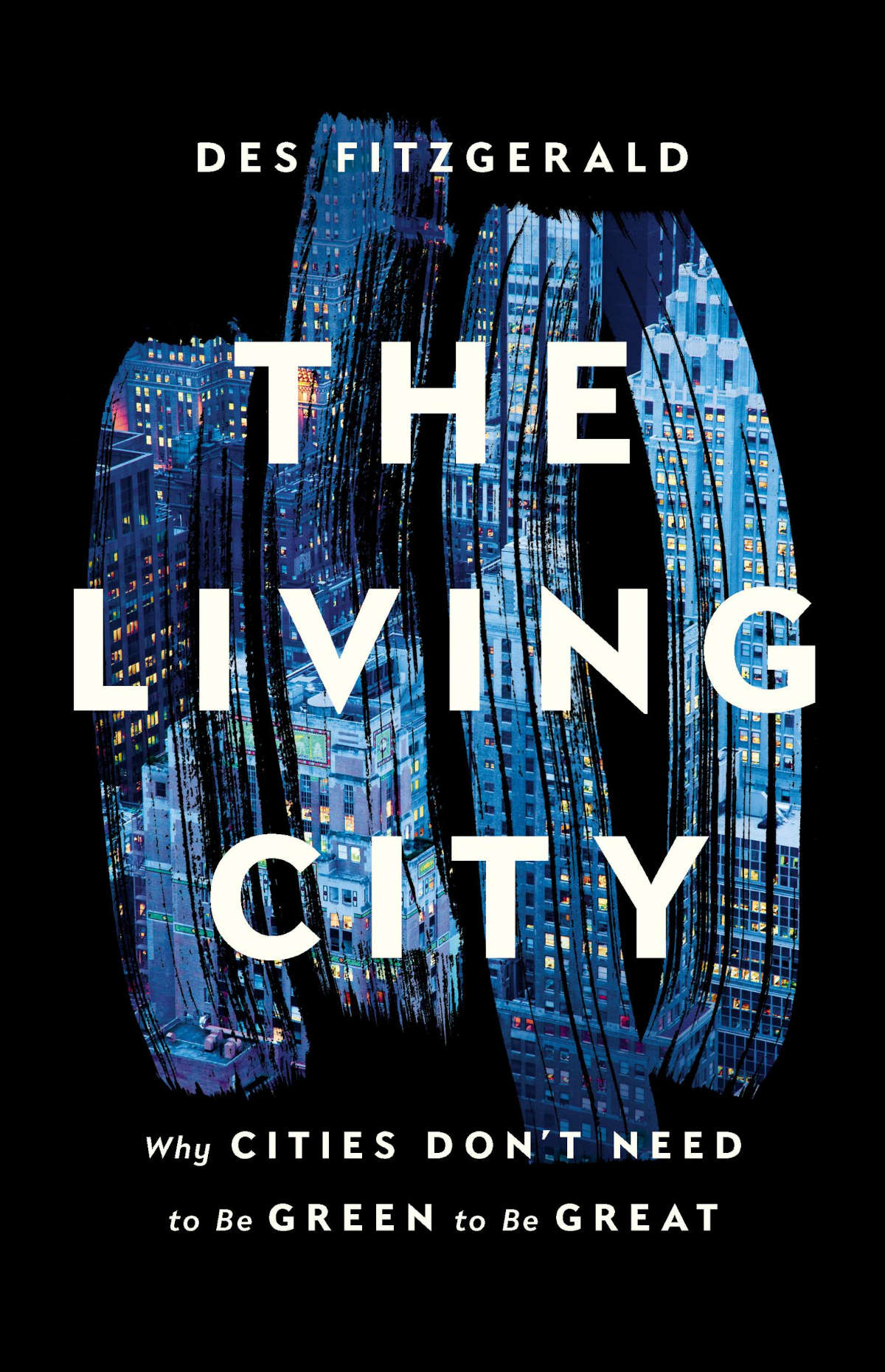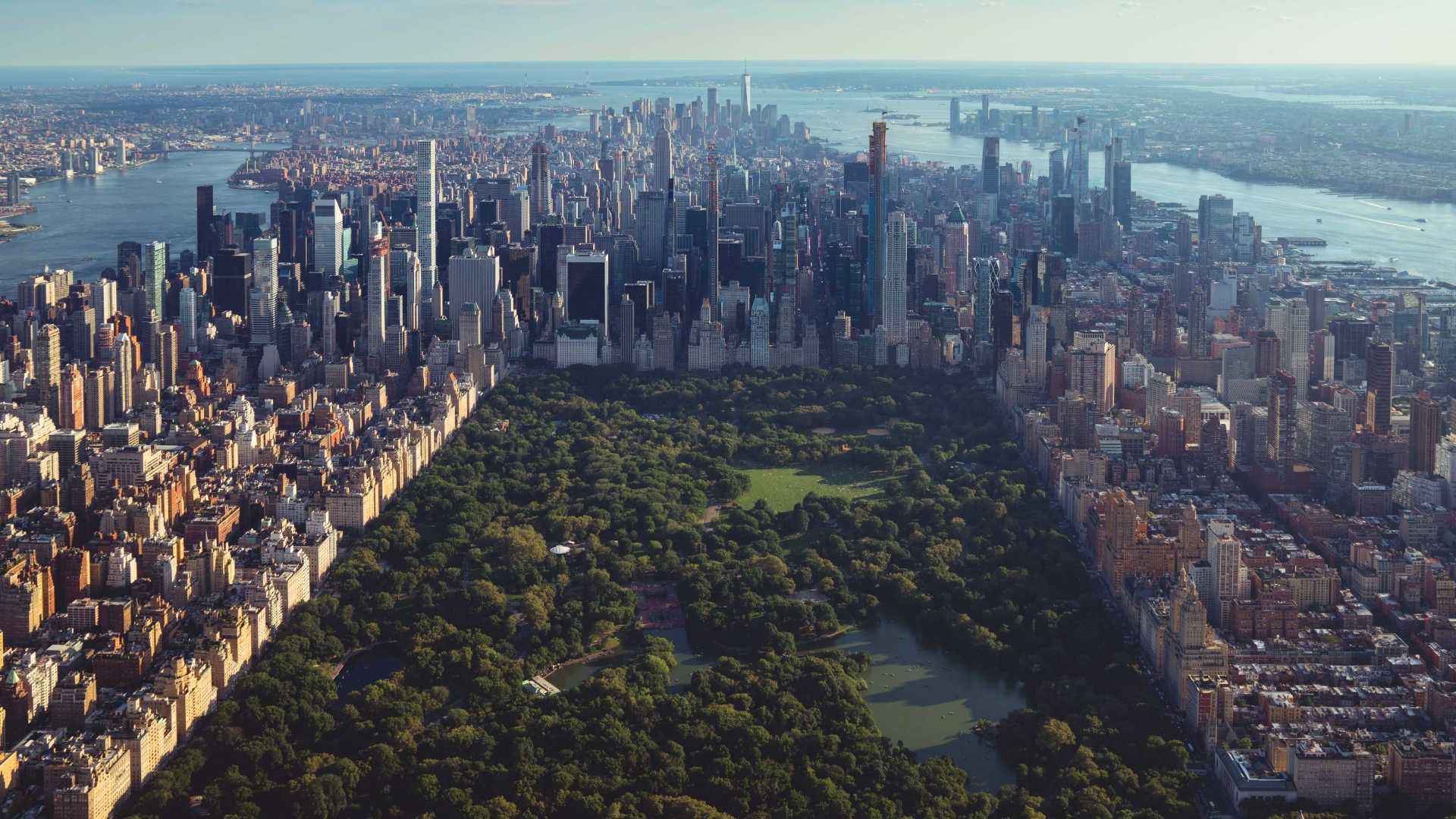In his new book “The Living City: Why Cities Don’t Need to Be Green to Be Great,” Dev Fitzgerald seems to turn urban history on its head. His provocative thesis is that contemporary urbanism has uncritically promoted a 19th century vision of the future. It’s a vision, Fitzgerald writes, “in which social elites, once anxious about the lively and convivial mass of urban humans that surrounds them, have suddenly become interested in covering streets with forests, in turning bustling neighborhoods into sterile parks.”
To make his case, Fitzgerald, a professor of medical humanities and social sciences at University College Cork, Ireland, dabbles in both history and science, assembling a vigorous argument against the orthodoxies of urban green spaces and their presumption of unalloyed goodness. Given ample scientific research suggesting the benefits of urban parks — and the psychological comforts of nature itself — Fitzgerald’s battle is entirely uphill, but he relishes every bit of it.

BOOK REVIEW — “The Living City: Why Cities Don’t Need to Be Green to Be Great,” by Des Fitzgerald (Basic Books, 272 pages).
He first turns a skeptical eye to traditional histories of urban life. Frederick Law Olmsted, the landscape architect, is an obvious target. Olmsted is widely revered for his work on New York City’s Central Park, and similar greenspaces. But to Fitzgerald, Olmsted is better remembered for betraying the urban experiment: By 1868, Olmsted was designing and promoting the suburbs as a superior mode of living, free from what Olmsted called “nervous feebleness,” a disorder thought to be caused by living in close proximity to others.
To a staid biographer, this anecdote might simply be evidence of Olmsted trying to make a living: Olmsted authored the excerpted report for the financial backers of a project he was consulting on in the suburbs of Chicago. But for Fitzgerald, the “urban anxiety” in Olmsted’s report reveals a “fantasy of the city that was not really a city at all.”
For Fitzgerald, the virtue of the city is its messiness — the way it forces different people, ideas, and goods together. “There is something worth protecting about the city as it is now,” he writes, “about our ability to think and build and plot collectively.” But for Olmsted and his contemporaries, the goal may have been the opposite: Their need for this green city fantasy, Fitzgerald argues, was “among other things, about what city life was doing to their own waning sense of racial superiority.”
How, exactly, a project like Central Park reflects its designers’ waning sense of racial superiority is not directly articulated. Fitzgerald seems to rely on his readers to supplement his arguments with their own presumed prior knowledge of urban issues — a gamble, with a thesis as heterodox as his. This fill-in-the blank approach is particularly problematic in passages where Fitzgerald insists on parallels between these 19th century ideas and the city’s present-day problems, but takes chapters of meandering to arrive at the source of the connection.
For Fitzgerald, the virtue of the city is its messiness — the way it forces different people, ideas, and goods together.
Yet a new “urban anxiety” has indeed emerged, according to Fitzgerald, embodied in the green city. “Instead of exalting the city as a kind of triumph over nature,” he writes, here is “a vision of urban space as a kind of anticity, a place that hides its own basic citiness, embarrassed, beneath a canopy of trees.”
This foliage hides other things, too. In a passage on Victorian England, Fitzgerald argues that parks have been “an attempt to mold and create a new urban citizen, to intervene in and even alter the ‘character’ of that citizen.” Many planners, including Olmsted, believed their design projects would have a civilizing effect on their users. Fitzgerald is worried that urban planners are still playing God today, and using their green city designs to create new kinds of people, in line with their own ideas of what is good.
In addition to his archival work, Fitzgerald grapples with the scientific evidence supporting the psychological benefits of greenery, water, and other natural elements. According to Fitzgerald, that work began in earnest in 1979 when Roger Ulrich, a health care design researcher, divided his students into two groups: Half of the participants were shown landscapes; the other half, cityscapes. Everyone was tested for pre- and post-viewing anxiety levels. Ulrich found that the students who viewed the urban scenes were more fearful than before, while the nature group was more carefree.
This study, and others like it, Fitzgerald notes, helped form the bedrock of modern urban planning. “I spent a lot of time attending workshops and conferences that are broadly about how the physical environment affects mental health,” he writes. He talks to street tree activists, environmental psychologists, and even a scientist who researches Shinrin-yoku, or forest bathing, a Japanese term for walking in nature as a way to calm the mind. The practice has been shown to reduce blood pressure and improve people’s mood.
“We have spent some decades telling young and mostly white college students and their parents that the city is, somehow, a dangerous place, a dying place, and, sotto voce, perhaps, also, increasingly a too diverse place.”
Many of the people he encounters believe that nature is “the solution to all the city’s problems,” he writes. Fitzgerald, of course, takes umbrage. For one thing, he points out, few proponents of this urban design strategy take the time to define what nature is. Is it the absence of human involvement? Or, as in the case of Olmsted’s parks, simply the illusion of it?
Fitzgerald also believes that many of the most popular environmental psychology studies suffer from confirmation bias: “We have spent some decades telling young and mostly white college students and their parents that the city is, somehow, a dangerous place, a dying place, and, sotto voce, perhaps, also, increasingly a too diverse place.” Surely, Fitzgerald writes, these and other cultural factors must have influenced the anti-urban, pro-greenery responses researchers generate.
For all his bravado, however, Fitzgerald is ultimately unable to condemn the public park, the street tree, or much else about the green city. “It’s true that the scientific literature is still quite new and hasn’t really settled down yet,” he writes, “but generally it does seem to support these conclusions — fairly consistently showing the positive effects of being around green space for health, and especially for mental health.”
But he also asks us to consider an alternative: “What if it’s the city that represents peace and calm?” he wonders. “And what if it’s the forest — the ungoverned place at the edge of civilization, the place that refuses the artifice and restraint of urban modernity — that is truly the space of tumult, excess, and anxiety?”
Eleanor Cummins is a Brooklyn-based science journalist. Her work has appeared in The New York Times, The Atlantic, and more.










